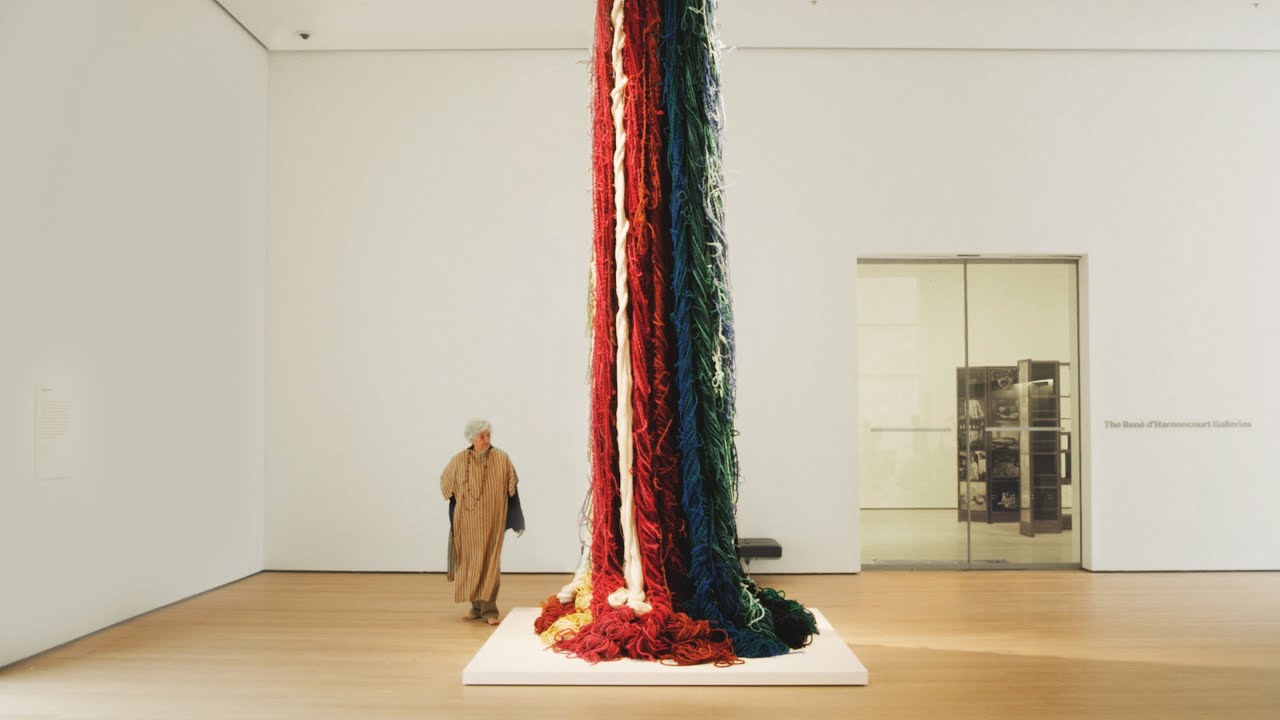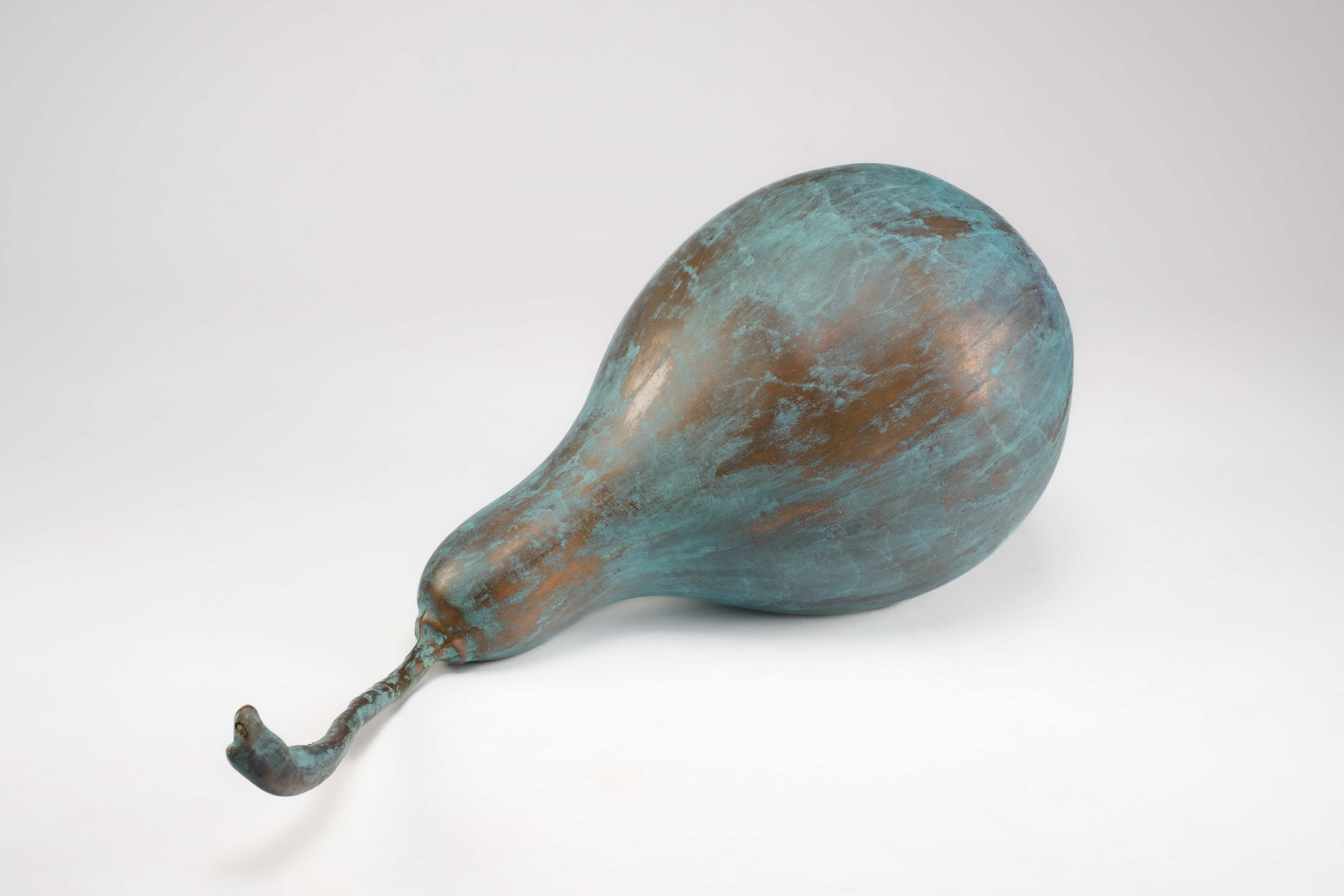Visitors to Abu Dhabi Art Fair this year have a rare opportunity to enjoy artworks from HSBC’s private collection at its first international exhibition. HSBC has joined forces with renowned Emirati curator Amneh Al Ghanim to present The Evolving Self. Showcasing a compelling exploration of international identity and the power of authentic voices, the exhibition brings together artists from diverse backgrounds to reflect on the ever-shifting nature of selfhood in a globalized world. In an exclusive feature, the HSBC team and Al Ghanim share their insights into the creative vision behind this groundbreaking collaboration, offering a glimpse into how art can bridge cultures and inspire meaningful dialogue.
Daniel Lancaster, Global Art Manager for HSBC
Daniel, how does The Evolving Self reflect HSBC’s mission to celebrate diversity and inclusivity within its art collection?
This exhibition explores how self identity is shaped and reflects on how culture, environment, life experiences and history mean we are all in a perpetual state of change. By showcasing artists who each depict their reflections based on their varying experiences in the world, we are championing inclusivity through celebrating these different perspectives.

As Global Art Manager, what are your long-term goals for expanding HSBC’s art collection, particularly in relation to fostering relationships with regional art sectors?
The HSBC art collection should reflect who we are, who are clients are and the people in the communities we serve. We can only achieve this through continuing to develop our collection – we are all constantly evolving and its important the collection does too.
We are keen to ensure voices of Emirati artists are represented in the collection, especially given HSBC’s deep roots in the region. Visiting Abu Dhabi has given me an exciting opportunity to build new relationships with local galleries and artists. I’ve met so many wonderful people since I have been here and I have found a very open and warm art community. My hope is that in the future these relationships can grow and we can hold similar exhibitions in other regions to showcase talented Emirati artists from our collection, bringing them to new audiences around our global network.
This marks an exciting moment in the 101-year history of the HSBC art collection, as it’s the first time that our works will be shown in the Middle East. Our ambition is to build a truly inclusive collection that celebrates the different perspectives of our employees, clients and the communities we serve. Visiting Abu Dhabi presents a wonderful opportunity for me to build new relationships with local galleries and artists

Is HSBC planning to support emerging artists in the region in addition to working with the established artists?
Working with emerging artists is key to the development of our collection and building real relationships in the region. Acquiring and working with artists at this point in their careers can have the biggest impact as it’s when artists need the most support.

Aimee Peters, Regional Head of Brand and Partnerships at HSBC
What inspired the decision to showcase the HSBC art collection in the Middle East for the first time, and why ADAF?
At HSBC, we look for opportunities which allow us to leverage our network to create opportunities and connect people, particularly between centres of strategic importance such as Abu Dhabi. Our conversations with ADAF were hugely collaborative from the start, and as Global Partner we will see artists from the region showcased in venues around the world during 2025, as well as giving us the opportunity to share some of our own collection with the global art community through Abu Dhabi Art for the first time.
What are the plans for next year?
We are exploring a number of options to ensure that we build on the amazing positive momentum and feedback that we’ve received this week – there is definitely more to come!
Amneh Ghanim, MENART Contemporary
What was your role as the curator in shaping the exhibition, and how did you approach the selection of the the artists and works convey the theme ?
We wanted to showcase the contemporary art scene from artists from different parts of the world. Each artist talks about self-identity from their own point of view. Highlighting the important topics of our time such as immigration, the new digitalisation of informations and the re questioning of social norms. The audience is invited to explore how art becomes a language for reflection, resistance, and transformation in a world marked by constant change.

What emotions and reaction do you hope to evoke from the exhibition viewers?
All of these artists have broken new ground as they paved the way in their careers, and their art works have strong messages behind them. The longer viewers sit with these pieces, the more they will discover. I would like invite people to take their time with each of these works. I would like to invite them to consider who they are and where they stand right now. They should recognise that identity isn’t just affected by who we are and what we think, but by everything around us. When we travel, we are ourselves and yet our essence changes from the experience. We want you, the viewer, to notice these little changes that happen to them.estion their own positionality in the world.
Could you elaborate on how the artist’s in the exhibition have “broken new ground” in their careers and the significance of their messages?
When I was talking about breaking new grounds I was referring to each artist in their own own personal careers.
For example:
Jade being one of the youngest artist to be acquired by the Tate;
Omar Ba’s reinvention of traditional forms, this reinvention challenges stereotypes about African art, presenting it as dynamic and relevant in global conversations;
Lucia Laguna her transformative late-career journey and her ability to bridge personal and universal themes have cemented her place as a pioneering figure in the contemporary art scene.
In your opinion, what is more important-the concept or its execution when it comes to creating art?
There needs to be sort of harmony between the two, where the execution amplifies the concept and the concept gives depth to the execution.

About The Evolving Self Exhibition
Titled The Evolving Self, the exhibition is curated by Amneh Al Ghanim, Co-Founder of Menart Contemporary in collaboration with Lancaster, and held in the HSBC Collection Space at the Abu Dhabi Art Fair, Manarat Al Saadiyat, 19 – 24 November 2024. Showing five diverse, yet cohesive works, the exhibition encourages visitors to consider the human experience across borders, while highlighting the global nature of the collection itself. Bringing together the works of Omar Ba, Mandy El Sayegh, Makiko Kudo, Lucia Laguna, and Jadé Fadojutimi in an exploration of how self-identity is shaped, each artist offers a distinct perspective on the perpetual fluidity of the self in the wider context of culture, memory, environment, and history.
Artists and artworks:
- White Grounds (The Sun), by Mandy El-Sayegh
Mandy El-Sayegh was born in Malaysia to a Malaysian Chinese mother and a Palestinian father, then spent her early childhood in Sharjah, UAE, before settling in the UK at a young age. Her heritage is referenced in her works, with integrates diverse media including her own drawings, found materials, newspaper and magazine scraps, her father’s calligraphy and occasionally Chinese characters. Through her art, she examines the social, cultural and political structures of the contemporary world and the fractured nature of identity shaped by migration.
- The Adorning Self, by Jadé Fadojutimi
Jadé Fadojutimi, a British Nigerian artist, refers to her paintings, often monumental in scale, as emotional landscapes. Her colourful paintings portrays emotion, identity and a continuous quest for self-understanding. Japanese culture, and particularly artist Maikio Kudo, has been a significant influence in her work. Jadé is the youngest artist ever to be acquired for the Tate permanent collection.
- Becoming a Field, by Makiko Kudo
Japanese artist Makiko Kudo’s artworks are characterised by expressive brushwork, vivid colours, and nostalgic motifs in surreal landscapes. The social context of growing up in Japan and themes of childhood are central to Kudo’s oeuvre, blurring boundaries between memory and history. Exploring quiet tensions, Kudo’s paintings investigate the coexistence of melancholy and peace, youth and maturity, reality and imagination, and invites viewers to reflect on how identity is formed and transformed.
- Champ de Riz a Kidal (Rice Field in Kidal), by Omar Ba
Senegalese artist Omar Ba emphasises the tension between history and contemporary identity in his mixed media paintings, with imagery open to interpretation. Humanity’s fraught relationship with the natural world is a recurring theme within his work, which often includes African symbolism and social and political motifs. He is also known for his early use of cardboard as canvas. Ba lives and works between Dakar, Senegal and Geneva, Switzerland. His works are held in the collections of the Centre National Des Arts Plastiques in Paris and the Fonds Municipal d’Art Contemporaine de la Ville de Geneva.
- Paisagem, by Lucia Laguna
Brazilian artist Lucia Laguna’s works celebrate the lush ecosystems found in her home country. Her paintings and collages demonstrate her keen observations of her surroundings in Rio de Janeiro’s sprawling North Zone, where the favelas inform her depiction of the relationship between environment and identity. HSBC acquired this work during Laguna’s first UK show, at the age of 83, recognising the artwork’s international appeal and the artist’s gift for speaking to people across the world.

From our earliest beginnings as the first bank in the UAE in 1946, to becoming the country’s leading international bank, we have been a key part of the social fabric. At HSBC, we understand the role we play in fostering economic development and in building cultural bridges. By partnering with Abu Dhabi Art, we reaffirm our commitment to supporting the communities we serve, fostering creativity, and contributing to the rich cultural landscape of the capital. This collaboration reflects our responsibility to invest in initiatives that create lasting, positive impact for both local communities and the global audience.
Mohamed Al Marzooqi, Chief Executive Officer, UAE, HSBC Bank Middle East
From HSBC’s first art acquisition in 1923, to its current count of more than 4,000 works, HSBC remains committed to maintaining a collection that improves the lives of its colleagues and its communities through breaking down barriers and opening conversations. Today, it is a powerful collection of authentic voices offering different perspectives, global and inclusive stories, and artists pushing their practice into new, meaningful and exciting directions. Through the global partnership with Abu Dhabi Art, HSBC is supporting multiple initiatives including two travelling exhibitions bringing local artists to the global art scene.





